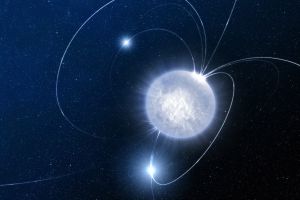 The research is published on Thursday (17 October) in Nature Magazine – one of the world’s most prestigious science publications. It proposes that the most luminous supernovae – exploding stars – are powered by small and incredibly dense neutron stars, with gigantic magnetic fields that spin hundreds of times a second.
The research is published on Thursday (17 October) in Nature Magazine – one of the world’s most prestigious science publications. It proposes that the most luminous supernovae – exploding stars – are powered by small and incredibly dense neutron stars, with gigantic magnetic fields that spin hundreds of times a second.
Scientists at Queen’s Astrophysics Research Center observed two super-luminous supernovae – two of the Universe’s brightest exploding stars – for more than a year. Contrary to existing theories, which suggested that the brightest supernovae are caused by super-massive stars exploding, their findings suggest that their origins may be better explained by a type of explosion within the star’s core which creates a smaller but extremely dense and rapidly spinning magnetic star.

